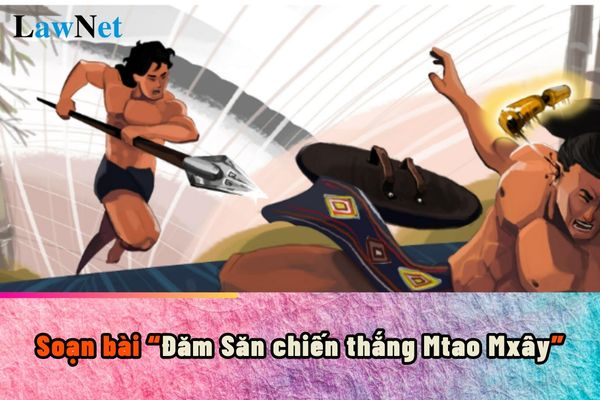What are guidelines on the lesson "Đăm Săn chiến thắng Mtao Mxây" for students in Vietnam? What are the rights of grade 10 students in Vietnam?
What are guidelines on the lesson "Đăm Săn chiến thắng Mtao Mxây" for students in Vietnam?
"Đăm Săn chiến thắng Mtao Mxây" is one of the texts that students will study in the Literature program for students in grade 10.
Teachers, parents, and students can refer to the following guidelines on the lesson "Đăm Săn chiến thắng Mtao Mxây".
|
Guidelines on the lesson "Đăm Săn chiến thắng Mtao Mxây" * Key Content: |
*Note: Information is for reference only./.

What are guidelines on the lesson "Đăm Săn chiến thắng Mtao Mxây" for students in Vietnam? (Image from the Internet)
What are the rights of grade 10 students in Vietnam?
The rights of Grade 10 students are specifically regulated in Article 35 of the Regulation issued with Circular 32/2020/TT-BGDDT:
- Equality in enjoying comprehensive education, ensured conditions for time, facilities, hygiene, and safety for studying in class and self-study at home, provided with information on their academic and training progress, and allowed to use equipment and facilities for educational, cultural, and sports activities of the school as regulated.
- To be respected and protected, treated equally and democratically, to complain to the school and education management levels about decisions concerning themselves; to transfer schools for legitimate reasons as per current regulations; to study ahead of schedule, skip grades, or study at an age higher than the regulated age as per Article 33 of the Regulation issued with Circular 32/2020/TT-BGDDT.
- To participate in activities aimed at developing talents in subjects, sports, and arts organized by the school if eligible.
- To receive scholarships or other aids in accordance with policies for social support, for students in difficult living conditions, and those with special abilities.
- To transfer schools if meeting the eligibility requirements; the transfer procedures are in accordance with the provisions of the Minister of Education and Training.
- To enjoy other rights as prescribed by law.
What are subjects included in the grade 10 curriculum in Vietnam?
Based on Section 4 of the General Education Program issued with Circular 32/2018/TT-BGDDT (amended by Article 1 of Circular 13/2022/TT-BGDDT) on the educational plan:
EDUCATIONAL PLAN
The general education program is divided into two stages: basic education (from Grade 1 to Grade 9) and career-oriented education (from Grade 10 to Grade 12).
The system of subjects and educational activities in the general education program includes compulsory subjects and educational activities, elective subjects oriented towards careers (abbreviated as elective subjects), and optional subjects.
The actual study time within a school year is equivalent to 35 weeks. Educational institutions can organize teaching either 1 session/day or 2 sessions/day. Both types of schools must implement the compulsory educational content uniformly across the country.
When entering Grade 10, the new Grade 10 curriculum for 2024-2025 prepares students for the career-oriented education phase by allowing them to choose the following subjects:
* Career-Oriented Phase
- Compulsory subjects and educational activities: Literature; Mathematics; Foreign Language 1; History; Physical Education; National Defense and Security Education; Experiential Activities, Career Orientation; Local Educational Content.
- Elective subjects: Geography, Economic and Legal Education, Physics, Chemistry, Biology, Technology, Informatics, Music, Fine Arts.
- Students select 4 subjects from the elective subjects.
- Learning Modules: Each subject in Literature, Mathematics, History, Geography, Economic and Legal Education, Physics, Chemistry, Biology, Technology, Informatics, Music, Fine Arts has several learning modules that form a cluster of learning modules for that subject. These modules fulfill the requirement for in-depth differentiation, helping students enhance their knowledge and practical skills, and apply learned knowledge and skills to solve real-world problems, meeting career orientation requirements. The duration allocated for each learning module is 10 or 15 periods; the total duration for a cluster of learning modules for one subject is 35 periods/school year.
In each Grade 10, 11, 12, students choose 3 clusters of learning modules from 3 subjects that match their aspirations and the school's organizational capability.
- Schools can construct subject groups from the elective subjects and learning modules mentioned above to both meet learners' needs and ensure suitability with the school’s conditions regarding teaching staff, facilities, and teaching equipment.
Optional subjects: Minority language, Foreign Language 2.

